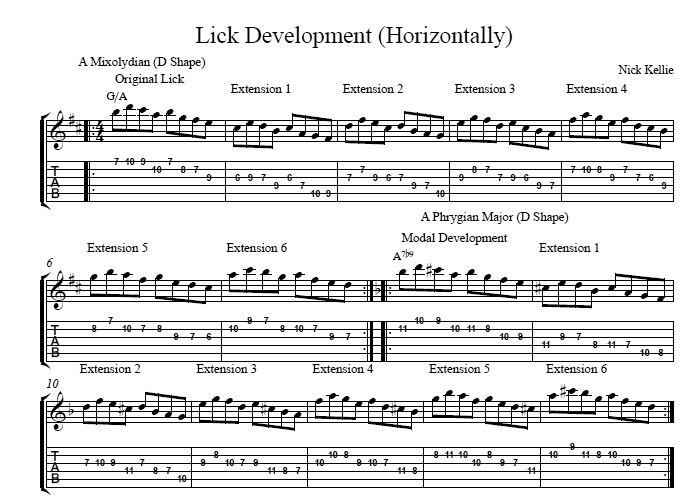In this article I wish to discuss one of the most important facets of improvising a guitar solo, that is the art of playing over chord changes. A lot of pop or rock music can sometimes just be over one tonal center (key) and therefore does not always need us to address each chord as a new key or scale (although we can outline the strong notes of each chord as it goes by).
In jazz and other styles of music we can often have two or more chords in a song that are from different keys and therefore require us to change scale for each new chord that is from a different key. For example, I have a backing track on the JamPlay JamTrack Player that changes between Em9 and Cm9. These two chords are definitely not from one key as there are never two minor 9 chords a major 3rd apart in a key. The minor 9 chord type can only be found on the ii or vi degree of a major scale harmonization (see my lesson on scale harmonization) so we can use E Dorian on the Em9 chord, or E Aeolian. On the Cm9 we can use C Dorian or C Aeolian. It is generally considered better to stick with one scale type in this situation as they are both minor 9, therefore, if you choose to use E Dorian then you should use C Dorian on the next chord and not Aeolian.
Now that you know the chord progression, and even know what scales to play, the real fun begins! Now you must understand how to link the scales fluently and make sure your ideas feel solid and connected. The main ingredient into addressing this is just simple practice, but I also wish to give you some helpful tips.
The first thing that I recommend practicing is to run through the scales back to back. Practice playing up one scale and then down the next, this really helps with visualization. In order to do this, you need to be able to play the aforementioned scales while staying in one position on the fretboard. I suggest you look into the CAGED system lesson I did for the website in order to facilitate this. Once you have mastered connecting the scale in this way, the next step is to do this in time. For example, practice going up the first scale for half a bar and then continuing the next scale from the point you just ended up on the previous scale. Depending on where you are in the scale, this could either be a common note between the two scales or a chromatic shift. This is where playing over changes really is at. You really need to know your scales inside and out. Once you have mastered this, you then need to execute musical ideas in your improvisation. Of course, this is subjective, but most will agree that running up and down scales sounds boring musically. It is an essential practice method but should be viewed as a drill to facilitate making music with no technical or theoretical hurdles.
One thing that I try and do is to transpose a musical idea to the new key. For example, if you were to play an idea in E Dorian, it would be nice to transpose that idea into C Dorian. Not only is this a good theoretical exercise, but if you were to do this transposing the lick throughout the scale, you get a ton of licks from just one original idea.
As you will see in the examples I have laid out below, that one idea in bar 1 has stretched out throughout the scale and I even transposed it to a different mode. See if you can still hear the initial architecture of the lick in all the examples.
As always, have fun with this and never be afraid to experiment!
Click to Enlarge
